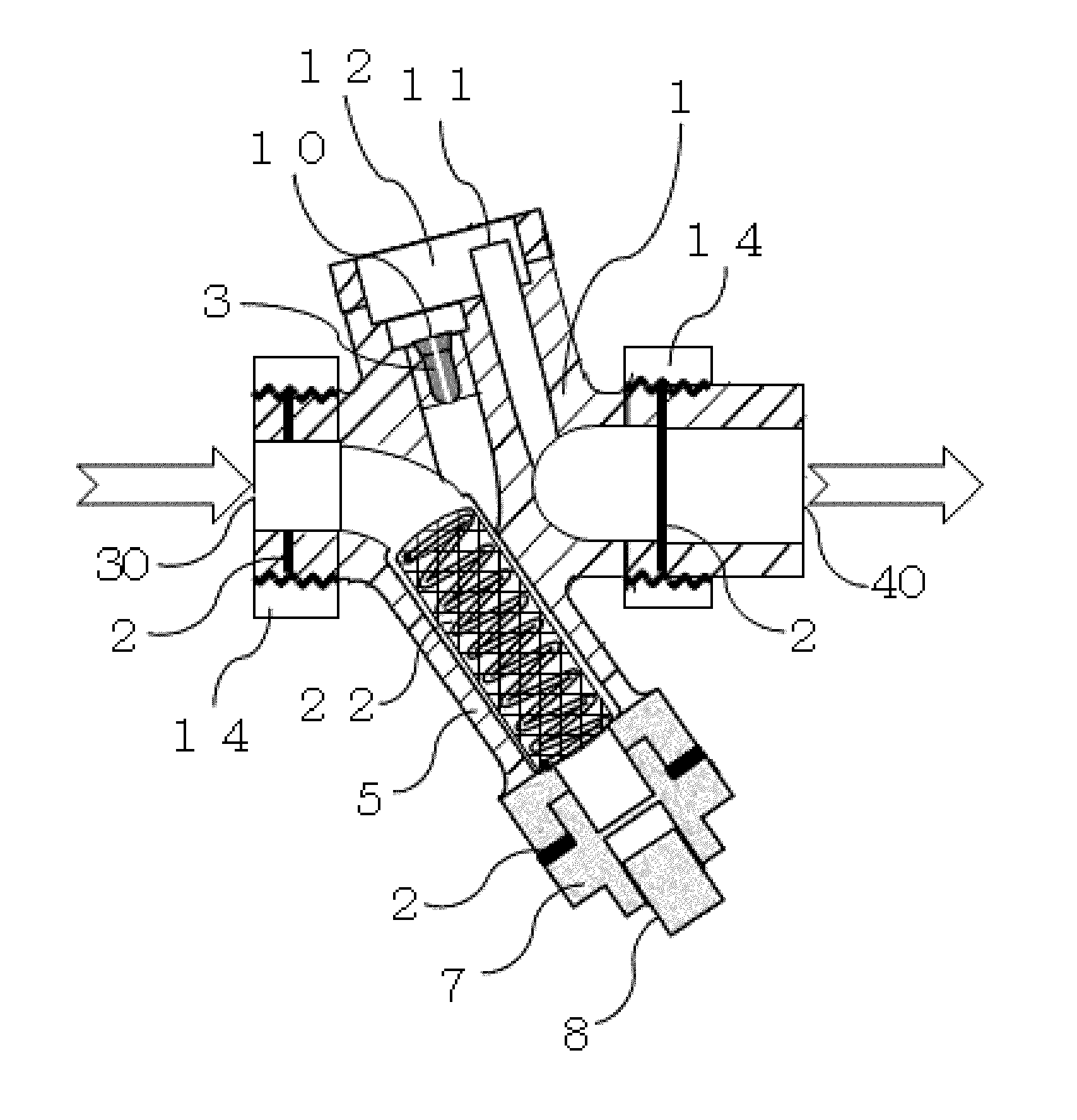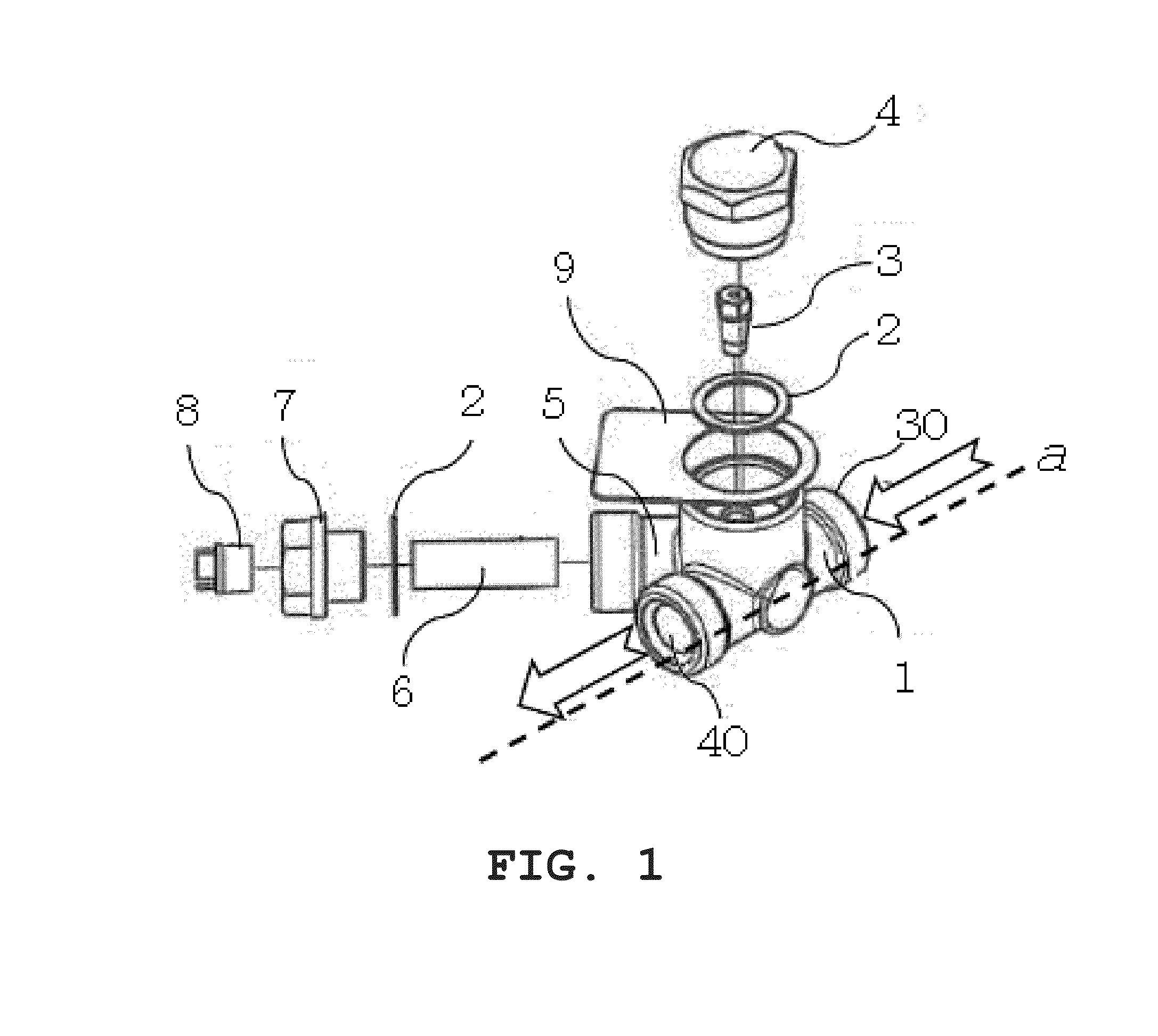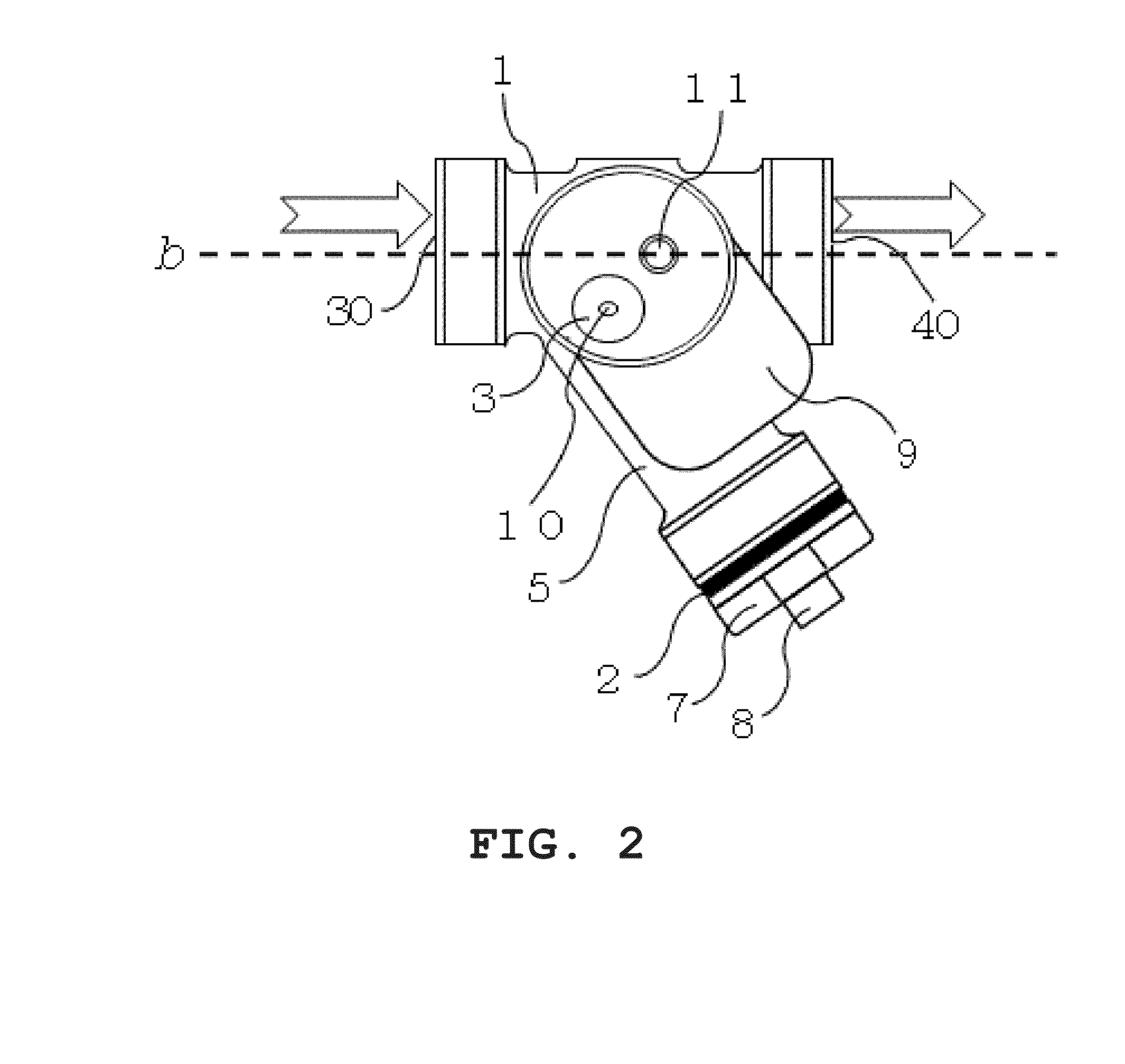Nozzle-type steam trap
a technology of steam traps and nozzles, which is applied in the direction of heating types, separation processes, lighting and heating apparatus, etc., can solve the problems of reducing the productivity of equipment, affecting the quality of products, and affecting the efficiency of equipment, so as to achieve convenient maintenance, easy adjustment and optimization, and easy attachment and removal.
- Summary
- Abstract
- Description
- Claims
- Application Information
AI Technical Summary
Benefits of technology
Problems solved by technology
Method used
Image
Examples
first embodiment
[0049](a) of FIG. 5 is a cross-sectional view of a Venturi nozzle-type steam trap according to the present invention. As is evident from the figure, a drainage volume adjusting component 15 in which the position of a non-drain system vent 11 is continuously variable with respect to a drain vent 10 of a Venturi nozzle 3 is disposed in the steam trap using a union 14. As is evident from the cross-sectional view ((a) of FIG. 5) and the side view ((b) of FIG. 5), this steam trap is fabricated by forming the non-drain system vent 11 inside an cross-sectional area of a drain reservoir 12 and connecting a pipe including the drain reservoir 12 and a pipe provided with the non-drain system vent 11 by means of a union, a flange or the like rotatable on the same axis. Accordingly, the height difference between the drain vent 10 and the non-drain system vent 11 can be controlled freely. It is therefore possible to adjust and optimize the discharged amount of drain for a change in the discharged...
second embodiment
[0050]FIGS. 6 to 9 illustrate a Venturi nozzle-type steam trap according to the present invention. This steam trap is characterized by additionally attaching a drainage volume adjusting component 15 to the conventional Venturi nozzle-type steam trap illustrated in FIG. 2. The drain vents 10 of the Venturi nozzles illustrated in FIGS. 2 and 6 are the same, but the non-drain system vent 11 illustrated in FIG. 2 serves as an intra-drain reservoir conduction port 13 (conventional non-drain system vent 11) for circulating drain throughout the reservoir 12 in FIGS. 6 to 9. In addition, the non-drain system vent 11 illustrated in FIG. 2 is disposed in the drainage volume adjusting component 15 in FIGS. 6 to 9. This drainage volume adjusting component 15 is connected to the body 1 on the same axis using a rotatable union, flange or the like, so that the height difference between the drain vent 10 and the non-drain system vent 11 is continuously variable.
[0051]As is evident, from FIGS. 7 to ...
third embodiment
[0053]FIGS. 10 and 11 illustrate the present invention. This steam trap is characterized by additionally attaching a drainage volume adjusting component 15 in which the non-drain system vent 11 is formed using a partition, in contrast to the drainage volume adjusting component 15 in which such a non-drain system vent 11 as illustrated in FIGS. 8 and 9 is formed as a pass-through slot. This steam trap features a modified shape of the non-drain system vent 11. The non-drain system vent 11 may have any shapes, as long as the vent serves the same function.
PUM
| Property | Measurement | Unit |
|---|---|---|
| diameters | aaaaa | aaaaa |
| height | aaaaa | aaaaa |
| volume | aaaaa | aaaaa |
Abstract
Description
Claims
Application Information
 Login to View More
Login to View More - R&D
- Intellectual Property
- Life Sciences
- Materials
- Tech Scout
- Unparalleled Data Quality
- Higher Quality Content
- 60% Fewer Hallucinations
Browse by: Latest US Patents, China's latest patents, Technical Efficacy Thesaurus, Application Domain, Technology Topic, Popular Technical Reports.
© 2025 PatSnap. All rights reserved.Legal|Privacy policy|Modern Slavery Act Transparency Statement|Sitemap|About US| Contact US: help@patsnap.com



